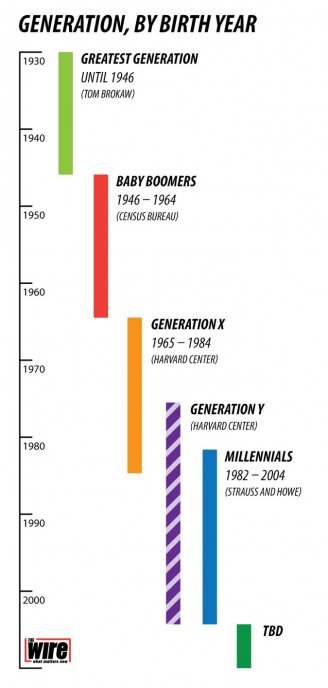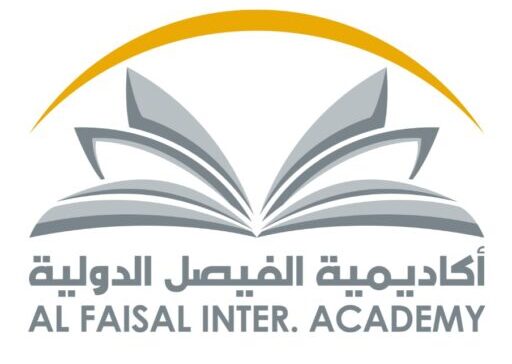Contents:
- Credit has to expand 18-20% for India to become $5 trillion economy
- Stockletters in 5 Flavours
- Central Bank Q3 net rises 64.16% at Rs 458 cr on improved margins
- Ensure timely resolution for better valuation, RBI deputy governor Vishwanathan tells banks
- Finally, RBI cracks the Da Vinci code of Indian banking


The urgency is for banks to improve people and system competency to source quality credit, monitor it and recover it in time as part of normal banking operations. Bad banks cannot be a panacea against the systemic flaws in credit administration. Despite improvement in internal credit administration needed to prevent deterioration of quality of assets in banks, asset quality woes continue to mar the bank’s capacity to recover bad loans and consequently unable to take up fresh lending. The banking system continues to suffer with shocks of asset quality woes. The collateral damage caused by such a high volume of toxic assets impinges upon the overall efficiency of banks.

Even as he reiterated the regulatory resolve to not let any large NBFC fail, Reserve Bank governor Shaktikanta Das Monday ruled out ordering an asset quality review of the systematically important shadow banks for now. There are various macroeconomic factors that impact asset quality of banks. Low economic growth, less exports due to a weak global economy, delay in granting administrative clearance to infrastructure and industrial projects are a few macroeconomic factors that lead to deterioration in asset quality. A sharp fall in currency exchange rates also causes importers to default on loans.
It also led to hesitancy of banks to expand fresh credit that made bank-dependent borrowers at the bottom of the pyramid to suffer. A good credit rating depicts that the borrower will pay back their financial obligation within the given time frame with very less chances of default. While a low credit rating is a risk to the lender’s capital where the chances of default are high.
Credit Rating is an evaluation of the creditworthiness of a borrower to fulfill his/her financial commitments or repayment of debts and other financial obligations. The borrower can be an individual, company, state authority or the government itself. Individual borrowers have credit scores while a company or government organization gets a credit rating. These ratings are given based on the credit assessment done by various credit rating agencies.
The worrying point is the improvement in asset quality coming from write off, restructuring of loans and sale of NPAs to asset reconstruction companies and not necessarily from recovery of loans. Besides many interconnected factors, the reasons for deterioration of asset quality of banks are a function of quality of credit origination. It is linked to the autonomy in credit decisions, risk governance and effectiveness of systemic controls. Intensity of post-sanction monitoring and follow up of credit, effectiveness of monitoring tools – ability to sense incipient sickness.
Credit has to expand 18-20% for India to become $5 trillion economy
The banking sector has posted picture perfect earnings for the second quarter of the ongoing fiscal . For the sector as a whole, non-performing assets are at five-year-lows, and return on assets at multi-year highs. For the sector as a whole, NPAs are at 5 year lows and return on assets at multi-year highs. The AQR created havoc on banks’ profit & loss accounts as many large lenders slipped into losses in both the said quarters, which resulted in some of them reporting losses for the full financial year. The asset quality of the banking sector will also benefit from the proposed sale of NPAs to the National Asset Reconstruction Company Ltd . While retail loans have also performed well despite covid pandemic-induced stress for individuals, helped by improvements in banks’ underwriting.
They will then be able to get additional loans to restart the units to revive the economy. As a result, the NPAs of banks are classified as restructured loans and began to descend in the post- pandemic period. Later, the Securitisation and Reconstruction of Financial Assets and Enforcement of Securities Interest Act, 2002 enabled the banks to deal with non-performing assets without court intervention. It also paved the way for setting up Asset Reconstruction Companies that needed licences to operate and are regulated by the RBI. Since the promulgation of the SARFAESI Act, 2002, 29 ARCs have been registered. The RBI also permitted the sale of NPAs of banks to other banks, non-banks and financial institutions wherever possible to improve the asset quality.
- The term asset quality implies the quality of loans that a bank has given out.
- According to Moody’s, the rising interest rates amid high inflation will lead to gradual increases in margins, supporting banks’ revenue.
- The 100 largest banks are measured by consolidated foreign and domestic assets.
- A wealth manager works on allocating an organization’s asset base in order to match the asset quality thus resulted to achieve the credit rating desired by the latter.
This was stated by the Union Minister of State for Finance Dr Bhagwat Kisanrao Karad in a written reply to a question in Lok Sabha today. During the first nine months of 2022, capital inflows into India stood at over 2 per cent of its gross domestic product. Get live Share Market updates and latest India News and business news on Financial Express. Borrowers can obtain stay orders from higher courts and prevent banks from enforcing the securities, despite SAFAESI Act. We will be happy to have you on board as a blogger, if you have the knack for writing.
With technology able to support augmentation of market and economic intelligence, banks may have to revisit their internal credit-handling processes, procedures and systemic controls related to quality of credit origination. The continued erosion of asset quality reduces share of interest earning assets, increases provision requirements and brings down profitability of banks. The resultant impact truncated the capital adequacy ratio of some of the PSBs. The overall deterioration in the performance of banks led to RBI imposing prompt corrective action on 11 banks.
Stockletters in 5 Flavours
The share of loans in the range of ₹1 crore to ₹100 crore has consistently declined from 28% in Q3 FY20 to 23% in Q3 FY23. In 2016, the Reserve Bank of India’s asset quality review, which was a forcible recognition of NPAs, pushed the numbers to shocking highs in FY18-19. Actually it’s a 180-degree change for both private and public sector banks. With the commencement of earnings season, major private banks have announced their fourth quarter ended March 31, 2017 result.
Furthermore, a large proportion of our stressed assets are under various resolution processes. These eventual resolutions will further improve our asset quality metrics meaningfully, and also make way for credit expansion and growth. The banks are safe on corporate and retail lending on improved underwriting systems. The asset quality of corporate loans have improved significantly as banks have tightened their underwriting criteria and is the best-performing segment in banks’ loan books over the past two years, the agency said. Coming to the effectiveness of these GNPA recovery, banks have referred loan recovery cases amounting to Rs.4.56 trillion in FY21 against which only 14 percent could be recovered through all the channels working out to Rs.64,229 crores.
Central Bank Q3 net rises 64.16% at Rs 458 cr on improved margins
Further, according to a report by ICICI Securities, vehicle loan growth in February was flat month-on-month after registering an average growth of 2.1% in the preceding 10 months. On the other hand, the share of small ticket loans up to ₹1 crore has increased from 42% in Q3 FY20 to 47% in Q3 FY23. Former Deputy Governor of RBI NS Vishwanathan said banks need to be aware and build possibility of black swan events in their strategy. Asset Quality Review is the RBI’s inspection of the balance sheet of selected commercial banks to examine the health of the banks. According to Moody’s, the rising interest rates amid high inflation will lead to gradual increases in margins, supporting banks’ revenue.
Hence, concentrate on utilizing your current assets to the fullest and leave the rest to the experts who have their best interest in your growth. Asset quality rating helps in determining credit rating of an organization. A good asset quality rating leads to a higher credit rating, which in turn strengthens an organization’s position in the market. “Macro-stress tests conducted by RBI for credit risk reveal that SCBs are well-capitalised and that all banks would be able to comply with the minimum capital requirements even under adverse stress scenarios,” it added. However, the brokerage notes that an economic slowdown could derail the momentum in loan growth. This is already visible across most loan ticket sizes barring the small ticket ones.
The systemic liquidity coverage ratio declined to 136% in September from a peak of 173% in September 2020 but the agency does not expect it to fall much further because banks are seeking to maintain buffers over the 100% regulatory minimum. However, deposit competition will increase leading to increases in funding costs. “Lower slippages and the reduction in outstanding GNPAs through recoveries, upgrades and write-offs led to this decrease. Lower GNPAs, combined with high provisions accumulated in recent years, contributed to a decline in NNPA,” noted the Economic Survey. So they must take the right risk and be prepared for risks coming from sources that nobody thought of,” he added. From 2001, the sector saw a sharp decline in NPAs till 2008, especially after 2004 on the back of the 7-8 percent GDP growth. Asset Quality Review initiated by the Reserve Bank of India in 2015 revealed high incidence of non-performing assets in banks.
Its failure has made banks highly risk averse to the NBFC sector, leading to a severe liquidity crunch. The group is not only under the bankruptcy process now but also under many a probe including by the ED, CBI and the SFIO. The RBI makes inspects the balance sheets of every banks as part of its Annual Financial Inspection process. But in recent years, the balance sheet conditions of banks become alarming and for that the RBI made inspection of selected banks’ balance sheets in random. RBI Governor Raghuram Rajan had made cleaning up banks a priority during his nearly three-year tenure given the sector is saddled with $120 billion of sour loans.
The term asset quality implies the quality of loans that a bank has given out. A bank is said to have good quality assets if loans given out by it are being repaid on time. An important measure of the asset quality of banks is the metric Non Performing Assets . NPAs are loans in which the interest, instalment or principal have not been repaid for more than 180 days.
These supportive institutions have been playing a strategic role in accelerating debt resolution. This asset quality improvement in the corporate segment follows a significant clean-up done of bank books in recent years, and strengthened risk management and underwriting. This has also led to increased preference for borrowers with better credit profiles. “A decline in the overall stressed assets due to a reduction in GNPAs on account of resolution and/or write-offs and improvement in restructured assets with control on asset slippages is expected to continue,” it said. Toning up credit administration and internal credit risk management is vital to the sustainability of the business model of banks.
Finally, RBI cracks the Da Vinci code of Indian banking
Recent RBI report on ‘Trend and progress of banking in India, ’ indicates that banks have written off Rs 8,83,168 crores in the last 10years. The share of PSBs in the write-off is Rs 6,67,345 crores working out close to 75 percent. The crux of the problem may be due to the engagement of banks in handling large numbers of loans of small value – less than Rs 10 lakh. In an effort for equitable distribution of resources, banks may not be able to balance the interest of a few large size loan accounts. If the proportionality of focus on few large loan accounts is ensured, the quality of loan portfolio can improve.
Post-sanction scrutiny of borrowers conduct and account operations need more attention. Technology can be better used to follow up loan accounts of Rs 1 crore and above with enhanced oversight to prevent the downgrade of loan accounts. If due to any external or internal cause the account goes out of order, quick action to retrieve it can be planned.
Morning Bid: Apple comforts as payrolls loom – Reuters
Morning Bid: Apple comforts as payrolls loom.
Posted: Fri, 05 May 2023 10:05:00 GMT [source]
Banks’ funding and liquidity have tightened in the past year because they have drawn down on deposits and liquid assets they have accumulated during the pandemic to support credit growth. Loans to small and medium-sized enterprises continue to pose risks to the asset quality of the banking system as the segment is most vulnerable to rises in interest rates, ratings agency Moody’s Investor Services said. A Moneylife index comparing returns of public sector banks and private banks threw up some very interesting findings, where investing in private banks would have increased boosted your returns by 50%, over three years—an enormous difference. CareEdge expects gross NPA ratio of scheduled commercial banks to reduce in FY24 due to lower incremental slippages, a reduction in special mention accounts and restructuring portfolios, and healthy growth in advances.
ICICI Bank Q4: From interest income, provisions, to asset quality, key highlights of the quarter Mint – Mint
ICICI Bank Q4: From interest income, provisions, to asset quality, key highlights of the quarter Mint.
Posted: Sat, 22 Apr 2023 07:00:00 GMT [source]
asset qualityed assets have been one of the biggest challenge to the growth of the Indian banking industry. At SBI, we are cognisant of these challenges, and are committed to improve the asset quality in our books. We have undertaken a multipronged approach to arrest fresh slippages by adopting technologically advanced underwriting practices for asset selection.
AM Best Downgrades Issuer Credit Rating of Société Tunisienne de Réassurance – Yahoo Finance
AM Best Downgrades Issuer Credit Rating of Société Tunisienne de Réassurance.
Posted: Fri, 05 May 2023 13:46:00 GMT [source]
At SBI, we have been proactive towards making the banking system efficient and credible, which is essentially a prerequisite for stronger economic growth of our country. According to Moody’s capital inflows support funding and liquidity of the banks in emerging markets. Inflation rates will fall but remain high in 2023 while economic slowdown is likely to be moderate, the report notes. India’s benchmark indices dropped 1% on Friday, wiping out the previous day’s gains, as lenders — led by HDFC group stocks — led the selloff. Continued worries about the health of the US regional banks, which dragged Wall Street down on Thursday night, also contributed to declines. Website Designed, Developed & Maintained by Express Network Private Ltd.
